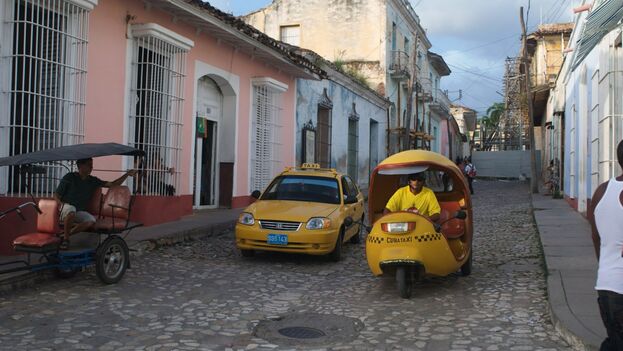
![]() 14ymedio, Madrid, 20 March 2023 — In the first months of the year, the cost of living in Cuba has increased by 5% compared with December, while the Consumer Price Index (CPI) was only slightly better in February than in January. The second month of the year ended with an increase in CPI of 2.61% compared with 2.74% the previous month and 44.50% higher than February 2022. In addition, the estimate is double the year-to-year increase at this time last year, which was 23% compared with February 2021.
14ymedio, Madrid, 20 March 2023 — In the first months of the year, the cost of living in Cuba has increased by 5% compared with December, while the Consumer Price Index (CPI) was only slightly better in February than in January. The second month of the year ended with an increase in CPI of 2.61% compared with 2.74% the previous month and 44.50% higher than February 2022. In addition, the estimate is double the year-to-year increase at this time last year, which was 23% compared with February 2021.
Once again, the figure is worse if we focus on the food and non-alcoholic beverage sector, which experienced a year-to-year increase of 72.62% or on restaurants and hotels, 62.51% over last year. These two areas, directly related to food, are the ones that once again drive inflation in Cuba–4.4% for the month and 9.5% since the beginning of 2023, in the case of gastronomy, 3.3% in February and 6% for the first two months of this year for food an beverages.
In more detail, this month white cheese contributed most to the price increases, with an increase of 13% followed by taro root (9%), rice (7.7%) and poultry (7.4%). The price of pork increased only slightly in this period and costs 1.6% more than last month, but its impact, along with that of rice, on inflation is greater.
With regard to gastronomy, snacks once again drive the increases, with a 5.7% increase, followed by prepared foods and breakfast (both at 5%), soft drinks (4.4%) and lastly, lunches and dinners, with a 3.3% increase. This sector is gaining importance when it comes to driving price increases and is once again, just like last month, the sector that experienced the most increases.
The sector in third place for price increases was furniture and home goods (2.3%), its impact is not as great as the transportation sector, fourth place in terms of inflation, but third for its impact on citizens day-to-day. In January, it was already 1.6% higher than in December and rose again in February to 2%.
Thr price of urban transportation in diverse vehicles is growing rapidly (7%), followed by urban taxis and rickshaws (5.2%). Long distance taxi prices increased by 3.3% and other types of transportation in this area by 1.87%. Finally, buses, the price of which continues to increase, although moderately — at less than 1%.
The report, published online on Friday by the National Information and Statistics Office (ONEI), focuses, as usual, on the goods that experienced the greatest variation in prices in February and that, along with cheese, rice and taro root are mostly foods. The price of cooking oil increased more than 10% and the price of flours, highly desirable during this time of great scarcity, increased more than 8%.
On the opposite end are price decreases, with peppers (-15.8%) and tomatoes (-13%) in the lead, and red beans (-2%) and black beans (-1.8%). Somewhere in the middle are cigarettes, which for several months has been one of the products that has contributed most to softening the calamitous price increases of the last several months.
This division, which began to register price decreases in December and January, once again declined notably with a decrease greater than 5%. So far this year, the decrease is almost -11%, moderating the year-to-year increase, which is only 12%.
With regard to the rest of the sectors, home services is the only one that experienced a price increase greater than 1%, with the following areas all less than that: education (0.9%), recreation and culture (0.6%), clothes and shoes (0.47%), health (0.3%) and communications (0.03%).
Although the official statistics help us monitor the evolution of inflationary trends, to understand the real CPI, it must be calculated taking into consideration the informal economy. American economist Steve Hanke, who does that calculation constantly, placed inflation at the beginning of March at 81%, 12 points above the prior month.
Furthermore, on March 8th Hanke published the evolution of the value of the currency, where the Cuban peso continues to be the fourth most depreciated against the dollar, at 60% and only surpassed by Zimbabwe, Venezuela, and Lebanon.
Translated by: Silvia Suárez
____________
COLLABORATE WITH OUR WORK: The 14ymedio team is committed to practicing serious journalism that reflects Cuba’s reality in all its depth. Thank you for joining us on this long journey. We invite you to continue supporting us by becoming a member of 14ymedio now. Together we can continue transforming journalism in Cuba.
